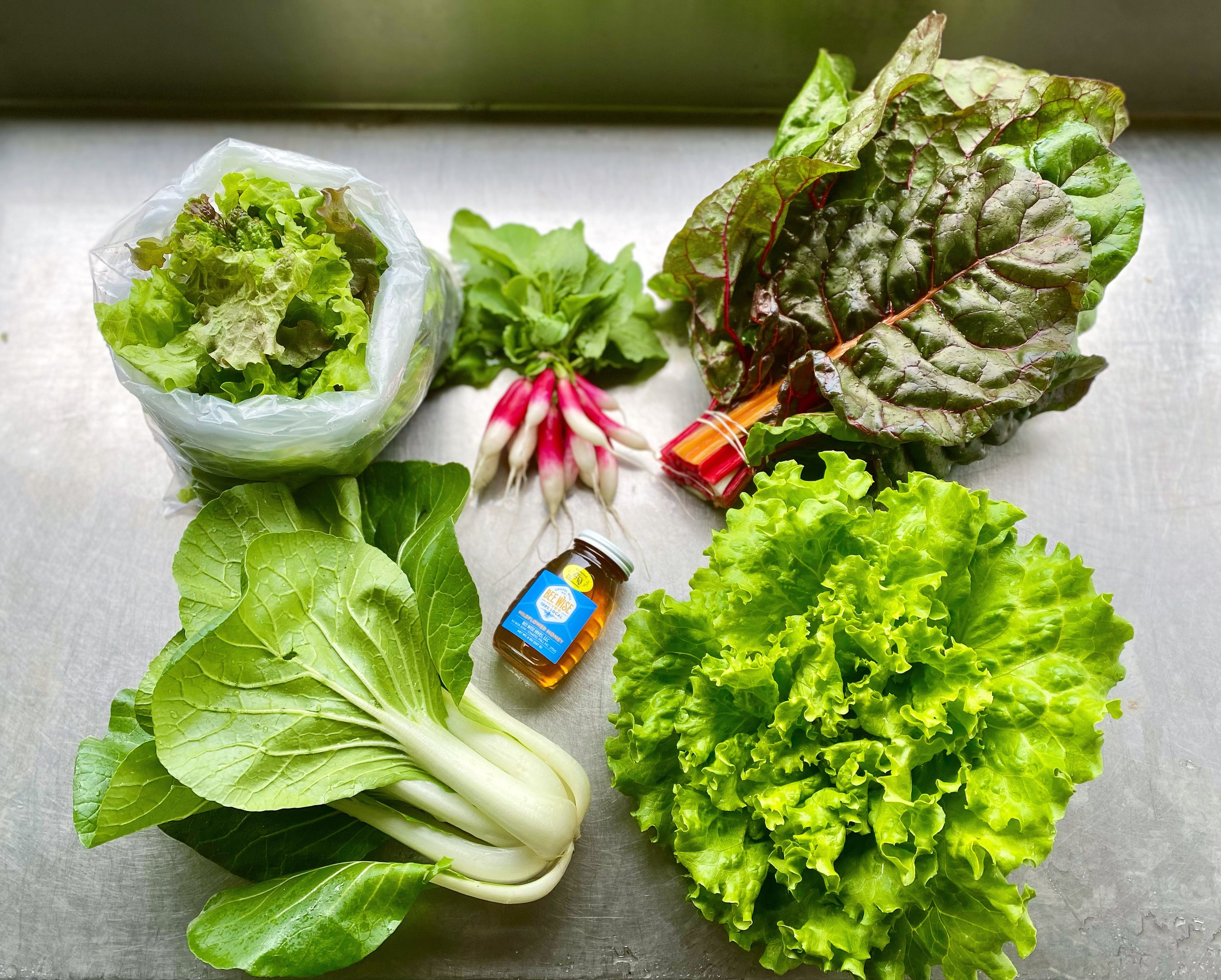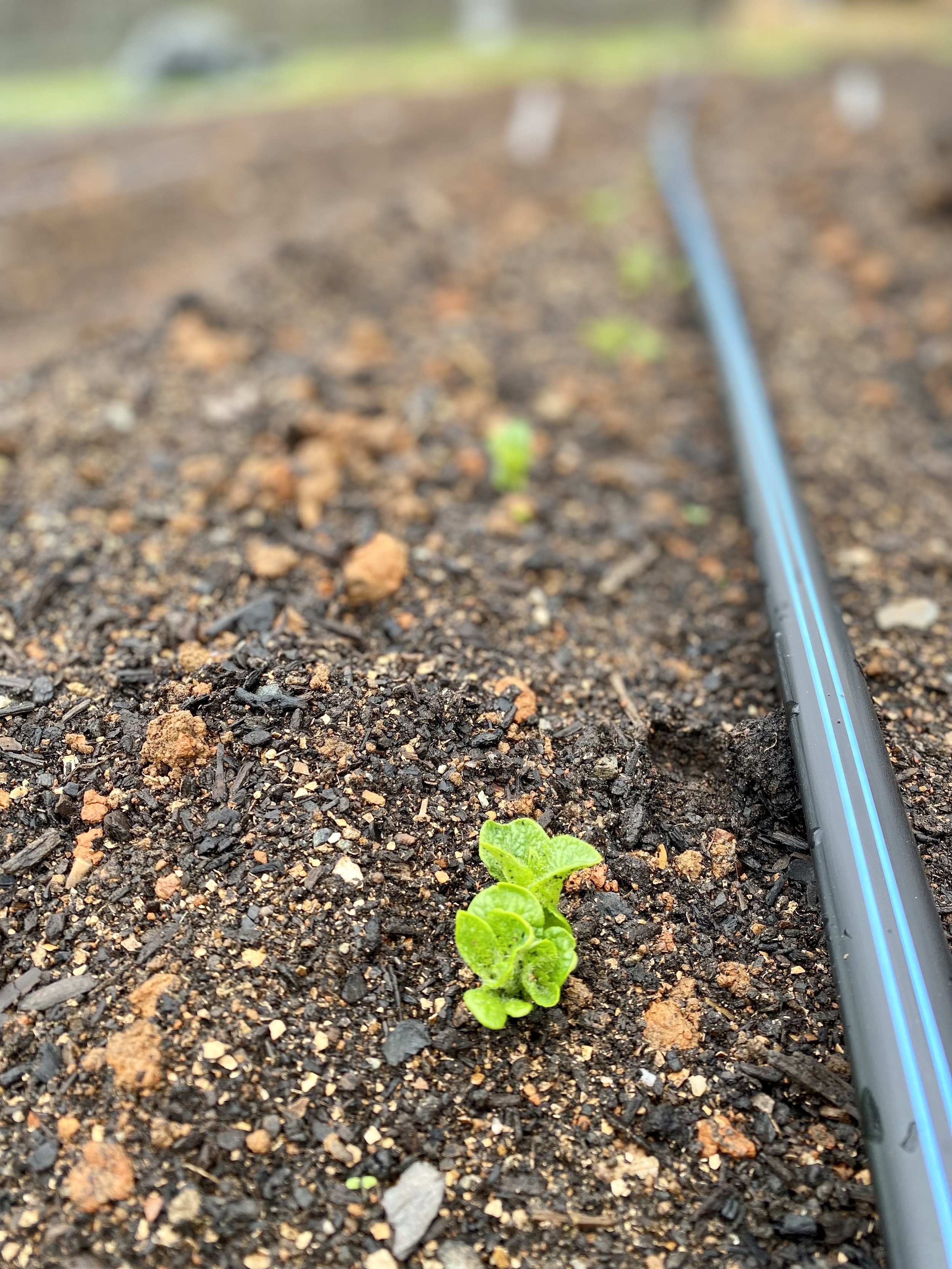Farm Notes
It may be peak spring at the moment, but believe it or not, I’m already planning (and planting) for winter. Yesterday I started all of our winter squash seeds – several types of butternut, acorn, delicata, and kabocha squash. Even though they are called “winter squash,” in our climate most growers plant their butternuts in May/June, and they are typically ready for harvest by August. This year I'm trying a new variety that I'm especially excited about called South Anna Butternut, which is supposed to be more resistant to the dreaded squash bugs and vine borers!
I’ve found that the earlier we plant winter squash (and honestly, anything in the cucurbit family) around here the better… because the longer you wait, the worse the pest/fungal pressure will be. I started the seeds in these 2.5” pots, and they will grow in our mini greenhouse for about 3 weeks before we plant them in the ground outside. We space our winter squash 2 feet apart between each plant… most winter squash generate a LOT of sprawling plant matter, so make sure to give them plenty of room!
Seed organizer!
While we are talking about seed starting… have I shared with y’all my secret for keeping seeds organized?! I recently got this plastic organizer (via Amazon here) and it has been a GAME CHANGER and makes me happy every time I open it up. It ensures our seeds stay clean, dry, and out of reach of any pesky mice or critters (who always seem to love eating your precious garden seeds).
As a general rule, you should plant seeds within 2 (and max 3) years from when they are packed, so if you have a glut of seed packets stashed around, it’s a good practice to go through them and double check their age and viability.
In other news on the farm, this week marked the halfway point of our Spring CSA! It was another week filled with spring greens galore, and I’m really proud of the veggies we sent out into the world (and also feeling veryyy tired just looking at at the photo below and all the work that went into making it happen). In the coming weeks, our CSA shares will shift away from greens and towards other spring veggies –like fennel, beets, turnips, carrots, cabbage, broccoli, etc. I love this time of year and I’m just trying to soak up all this green goodness, because before we know it, we will be deep into summer and our plates will be filled with tomatoes, peppers, eggplant, and zucchini!
Last but not least, it’s time to announce the winner of our April giveaway: CONGRATS Jennifer Johnson! I’ll be in touch directly and send along your new cookbook, Dishing Up the Dirt. Thanks to everyone who entered, I loved hearing about all the destinations where you’d like to eat your way through… stay tuned for another giveaway coming up in May. :)
Kitchen Notes
Even if you think you don’t like radishes, I hope you’ll give this recipe a try and see if I can change your mint! This dish has only 5 ingredients, comes together in under 10 minutes, and hits all the notes you want – sweet, salty, and savory. Any kind of radishes will work, and this recipe can also be made with hakurei turnips instead of radishes.
GLAZED MISO HONEY BUTTER RADISHES
INGREDIENTS
2 tablespoons yellow miso paste
2 tablespoons room temperature butter
1 tablespoon honey
1 bunch radishes
Salt and pepper, to taste
INSTRUCTIONS
Stir together the miso paste, butter, and honey in a small bowl and set aside.
Remove any tops from the radishes and slice them in half lengthwise.
Heat up a large skillet over medium-high heat and add the radishes to the skillet along with the miso honey butter mixture. Cook, stirring often, until the radishes are tender and most of the liquid has evaporated and turns into a nice glaze, 5-8 minutes. You want to be careful not to overcook the radishes to the point where they are mushy… you still want a little bite/firmness to them! Serve warm and enjoy.
Today’s Stats
Low temp: 52F
High temp: 71F
Sunrise: 6:27am
Sunset: 8:03pm
Moon phase: Waning Crescent
Additional notes: Mostly sunny and lovely




















